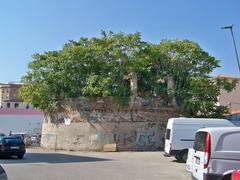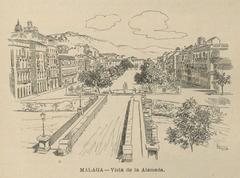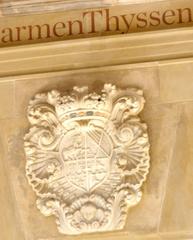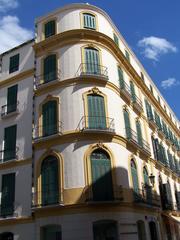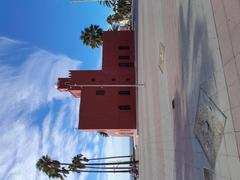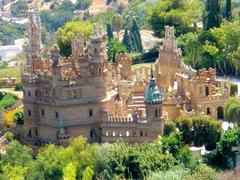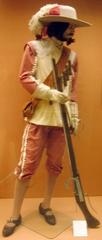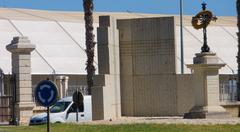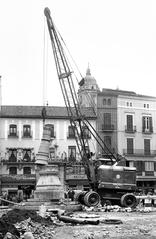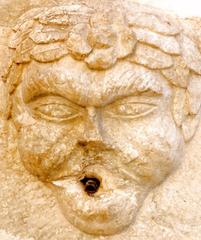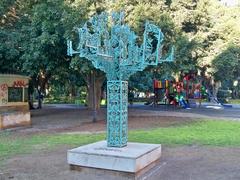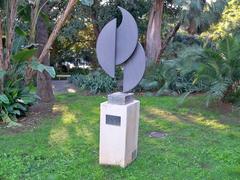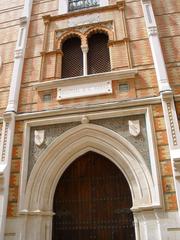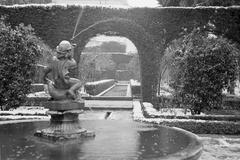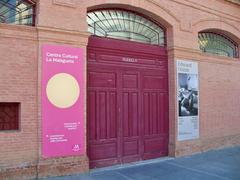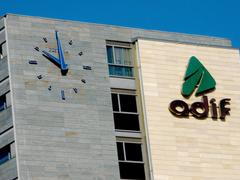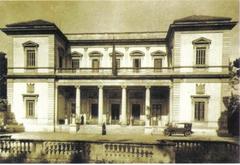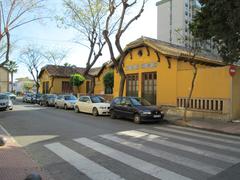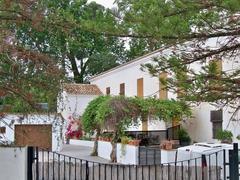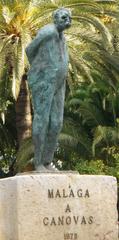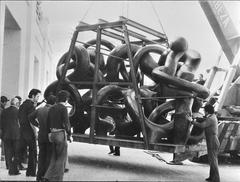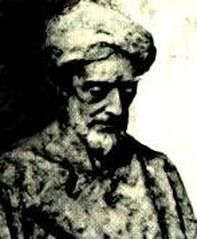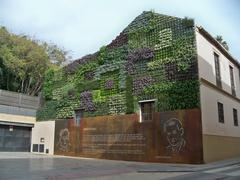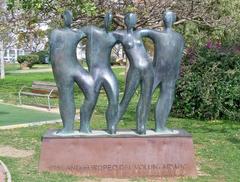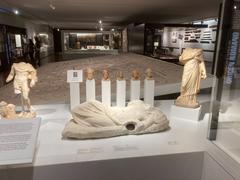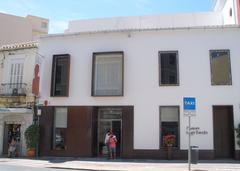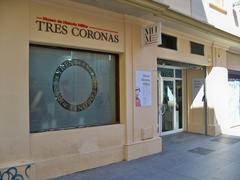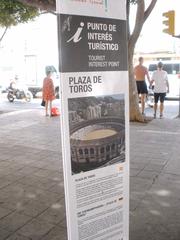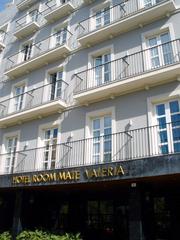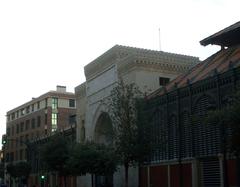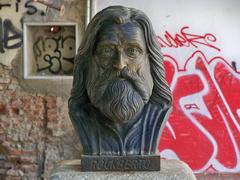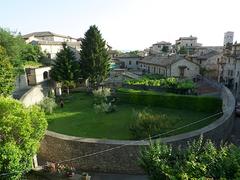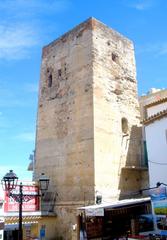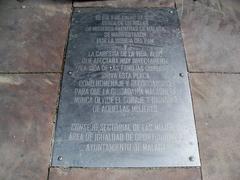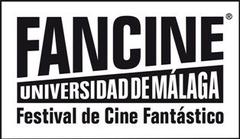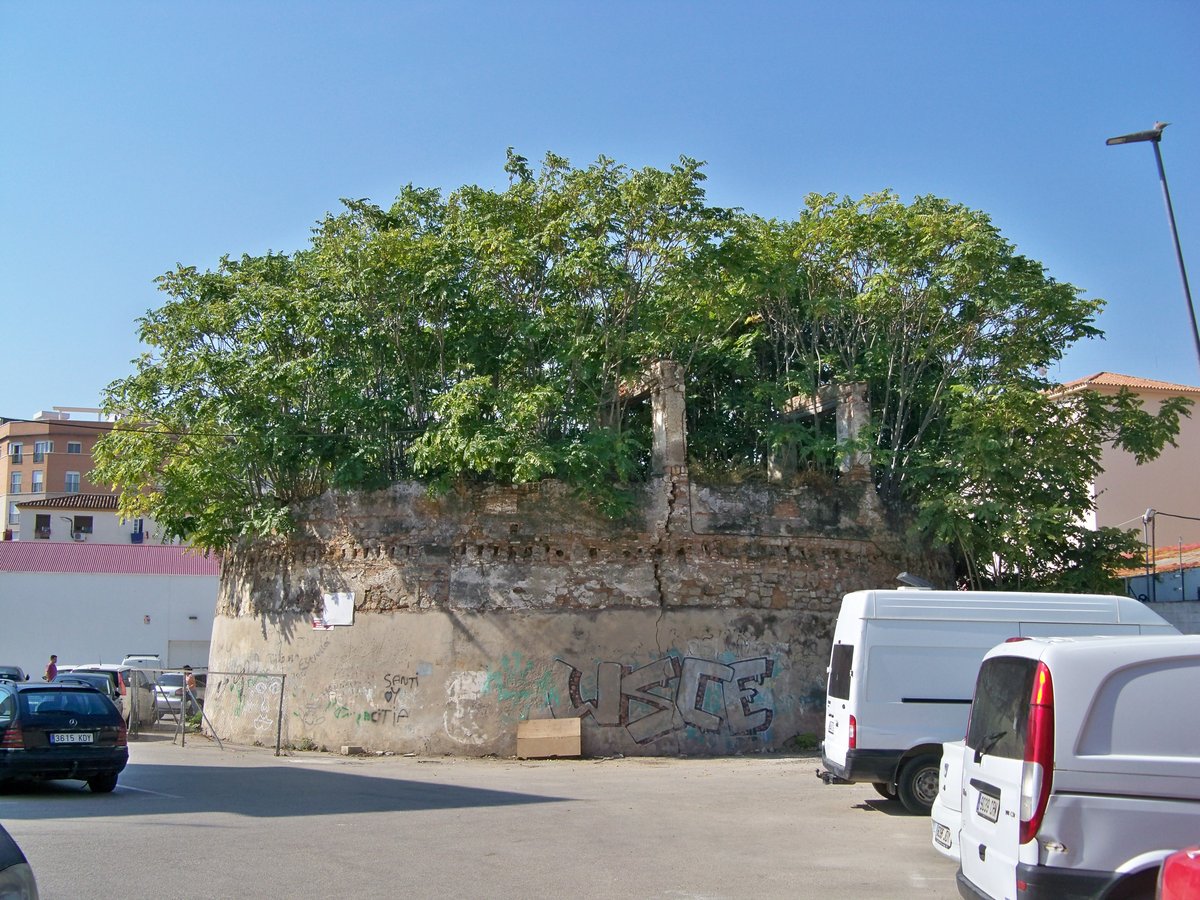
Noria de Huerta Godino: Visiting Hours, Tickets, and Comprehensive Guide to Málaga’s Historic Waterwheel
Date: 14/06/2025
Introduction
Nestled within Málaga’s historic agricultural district, the Noria de Huerta Godino stands as a remarkable testament to centuries of Mediterranean agrarian life and hydraulic engineering. Originally built between the 14th and 17th centuries, this ancient waterwheel (noria) was essential for irrigating Málaga’s fertile huertas, supporting both the local economy and culture (Urbanismo de Málaga; La Opinión de Málaga). The noria fuses Islamic and Christian engineering traditions and serves as a symbol of community, rural identity, and Málaga’s rich past (malagayhistorias.blogspot.com; spanishsabores.com).
Despite facing threats from urbanization and deterioration, recent conservation efforts have highlighted its importance as a heritage site. This guide provides a detailed overview of the noria’s history, architecture, significance, conservation status, and practical information for visitors—including current visiting hours, ticketing, accessibility, travel tips, and nearby attractions.
Table of Contents
- Origins and Historical Context
- Architectural Features and Engineering
- Agricultural and Economic Role
- Social and Cultural Significance
- Decline and Preservation Challenges
- Conservation Status and Recent Efforts
- Visiting the Noria de Huerta Godino: Practical Information
- Frequently Asked Questions (FAQ)
- Conclusion and Call to Action
- References and Further Reading
Origins and Historical Context
The Noria de Huerta Godino is believed to have been constructed between the 14th and 17th centuries, during a period of agricultural expansion in Málaga. The estate was named after Alonso Godino de Zaragoza, a notable 16th-century landowner (La Opinión de Málaga). The waterwheel played a key role in drawing water from underground sources to irrigate the surrounding huertas, enabling intensive cultivation of crops vital for local consumption and export.
Architectural Features and Engineering
The noria features a robust circular stone platform, a remnant of the once-complete waterwheel system. Norias like this were introduced and refined during Islamic rule, utilizing animal or water power to lift water into aqueducts and cisterns via a system of buckets attached to a large wooden wheel (Urbanismo de Málaga). The Huerta Godino noria’s stone base and mounting points are still visible, offering insights into the sophisticated and sustainable technology of the time.
Agricultural and Economic Role
The noria’s main function was to provide water for Málaga’s market gardens, supporting the cultivation of citrus, olives, vegetables, and other crops year-round. This irrigation system was essential in the region’s semi-arid climate, boosting both crop diversity and yields (La Opinión de Málaga). The productivity of estates like Huerta Godino underpinned Málaga’s reputation as a prominent agricultural center during the early modern period.
Social and Cultural Significance
Beyond its technical function, the Noria de Huerta Godino symbolizes community ingenuity and cooperation. Norias were central to rural life, requiring collective management and serving as gathering points for local families. The site is also a cultural icon, referenced in stories, literature, and local festivals, and serves as a tangible link between Málaga’s agrarian past and its urban present (spanishsabores.com).
Decline and Preservation Challenges
The 20th and 21st centuries brought urban expansion, isolating the noria and exposing it to neglect and environmental threats. While it is officially listed on Spain’s “Lista Roja” of endangered heritage sites (Hispania Nostra), comprehensive restoration and municipal protection have yet to be enacted. Advocacy from local heritage groups and politicians continues to push for legal protection and restoration (Diario Sur).
Conservation Status and Recent Efforts
Physical Condition
The noria, located on Calle Salvador Dalí, suffers from cracks, structural instability, and vegetation overgrowth. While recent cleanups have removed invasive plants and revealed the full extent of structural decline (La Opinión de Málaga), the site remains fenced off for safety and awaits full restoration.
Recent Actions
- Vegetation Removal: Major cleanups in late 2023, led by the Diputación de Málaga, removed damaging vegetation.
- Stabilization: Cement patching has been applied, but comprehensive restoration is pending.
- Advocacy: Ongoing campaigns are pressing for official heritage designation and funding for repairs (Hispania Nostra).
Visiting the Noria de Huerta Godino: Practical Information
Location and Access
- Address: Calle Salvador Dalí, near Martiricos and Avenida del Arroyo de los Ángeles, Málaga.
- Ownership: Land owned by the Diputación de Málaga.
Visiting Hours and Tickets
- Hours: The noria is an outdoor site, visible from the surrounding parking area. There are no official visiting hours; it can be viewed during daylight, but the structure is fenced off for safety.
- Tickets: No ticket or fee is required for viewing from the exterior. Interior access is currently prohibited.
Accessibility
- Mobility: The viewing area is level and accessible to most, but there are no formal visitor facilities or ramps.
- Safety: Respect fencing and barriers; do not attempt to enter the unstable structure.
Guided Tours and Special Events
- Tours: No regular guided tours are available, but local heritage organizations occasionally organize special visits or educational events. Check their websites or contact them directly for updates.
Nearby Attractions
- Alcazaba Fortress and Roman Theatre: Explore Málaga’s Moorish and Roman heritage.
- Historic Center: Enjoy museums, gardens, and vibrant local culture.
- Martiricos Park: Offers green space and proximity to the noria (Malaga.com).
Frequently Asked Questions (FAQ)
Q: What are the visiting hours for the Noria de Huerta Godino?
A: The site is outdoors and can be viewed from surrounding areas during daylight hours; there are no official hours.
Q: Is there an entrance fee?
A: No, viewing from outside the fence is free.
Q: Is the site accessible to people with disabilities?
A: The viewing area is generally accessible, but the lack of facilities and uneven terrain may pose challenges.
Q: Are guided tours available?
A: Occasionally, local heritage groups offer guided visits; check with them for schedules.
Q: Can I take photographs at the site?
A: Yes, photography is permitted from public areas. Please respect site barriers.
Conclusion and Call to Action
The Noria de Huerta Godino remains a powerful emblem of Málaga’s agricultural ingenuity and community spirit. Although currently endangered, its visible remains and ongoing advocacy efforts offer visitors a compelling glimpse into the region’s history. Supporting local conservation initiatives and participating in educational programs are vital to ensuring the noria’s preservation for future generations.
For an enhanced experience, download the Audiala app for guided tours, real-time updates, and exclusive content. Follow us on social media and explore related articles to deepen your understanding of Málaga’s heritage and support sustainable, responsible tourism.
References and Further Reading
- Urbanismo de Málaga, 2012 (Urbanismo de Málaga)
- La Opinión de Málaga, 2021 (La Opinión de Málaga)
- malagayhistorias.blogspot.com, 2024 (malagayhistorias.blogspot.com)
- Hispania Nostra, 2022 (Hispania Nostra)
- La Opinión de Málaga, 2023 (La Opinión de Málaga)
- spanishsabores.com, 2025 (spanishsabores.com)
- Malaga.com, 2025 (Malaga.com)
